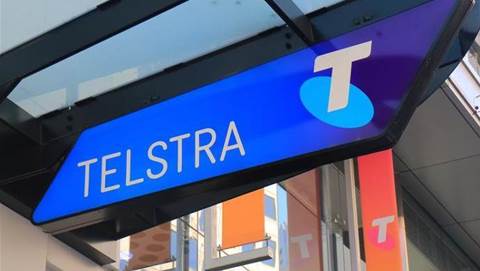Why our story holds true

NBN Co's statement ignores the central theme of our analysis: that parts of the rollout are slipping or delayed.
NBN Co's statement does not address these delays. It evasively argues that the story is incorrect because we said these connections had 'disappeared'. It's a play at semantics that doesn't hold any weight against our analysis.
We used the word 'delayed' because it would be disingenuous to suggest that the connections won't be made at all. That will only be relevant if a Coalition government is elected and the project gets scrapped. Otherwise, the assumption is that if NBN Co rolls out an entire network, then all in the nation get a network, and the story becomes a question of when.
The closest NBN Co comes to addressing delays was a concession that fibre serving area modules (FSAMs) "move backwards and forwards".
NBN Co goes on to say "the forecast date for FSAMs to be ready for service can – and do – get pulled forward after having previously moved backward." No examples were provided.
NBN Co takes issue with iTnews' use of the words 'fudged', 'disappeared' and 'losing previously-promised fibre connections'.
The statement also introduces some of its own:
"No previously announced construction modules have been removed from the construction program."
We agree. "Delayed" doesn't imply "removed".
And to quote that "towns and cities have disappeared" is selective.
The full sentence from our analysis was and is:
"A substantial percentage of the fibre connections promised to 14 towns and cities have disappeared from the rollout plan."
The fact is that 69,500 connections aren't going to be delivered on the schedule that was originally promised, by virtue they now come under a different (undisclosed) FSA, for which build timing is unknown or not publicly announced.
At minimum, those people have a right to know where their connection has been re-allocated, and what effect that has on when they can run broadband services on the NBN.
Methodology shift?
NBN Co's statement does confirm what iTnews suspected from the outset given the wholesale level of change to the brownfields FSA numbers.
The Government-owned company has changed the methodology used to the size the build elements of the network.
NBN Co states that in the period between the January and February service-ready reports, two things happened:
- First, it revised the placement for fibre serving areas according to "network design rules" mentioned in a revised one-year construction rollout plan.
- Second, new information from "area-by-area walkouts" caused "some fluctuations in the number of premises in different construction modules" as more detailed data became available.
This methodology shift is convenient. We suggested it to them in the questions we posed on Thursday last week:
iTnews: Why did the approx number premises for each FSA change across the board in February - often the shift per FSA is a matter of a couple of hundred premises between old and new e.g. Blacktown's 28,300 becomes 28,600, but with three less premises per FDA for 2BLK coded builds (just as an example). Did NBN Co change its methodology (otherwise what reason would there be for such large scale shifting in those numbers)?
NBN Co's response does little to address how these "fluctuations" impact when the displaced premises can expect to get their fibre connection.
When should those households now expect to receive their fibre connections?
Numbers
NBN Co points to Gulliver/Townsville as "merely one of many ... errors of fact in the report".
The figures NBN Co provided in its statement differ to those in its spreadsheets.
For those wishing to perform their own checks, Gulliver's FSA is codenamed 4GUL, and Townsville's FSA is 4TNS.
"In the original planning, Townville had 8 FSAMs and Gulliver had 12 containing approximately 50,000 premises," NBN Co stated. "In the current plan, Townsville has 12 FSAMs and Gulliver has 8 – still containing 50,000 premises."
Looking at NBN Co's spreadsheets: In January, the combination of premise numbers at 4GUL (29,400) and 4TNS (20,000) adds up to 49,400 — close enough to 50,000. 4GUL has 12 FSAMs and 4TNS eight. OK so far.
In February, 4GUL has 17,000 premises and 4TNS has 22,900, making a combined total of 39,900.
NBN Co's numbers are about 10,000 out on the revised premises count for the two FSAs.
Greenfields?
As for our analysis of connections to new housing estates or on fixed wireless, NBN Co's statement answered nothing.
It avoided the issue of these slippages entirely.
We applaud NBN Co for their transparency in releasing service-ready reports. What we're concerned about is whether those reports give a true indication of the progress of the rollout.

.png&h=140&w=231&c=1&s=0)


.png&h=140&w=231&c=1&s=0)





.png&w=120&c=1&s=0) EDUtech AU
EDUtech AU
 Integrate Expo 2025
Integrate Expo 2025
.png&w=120&c=1&s=0) Security Exhibition & Conference 2025
Security Exhibition & Conference 2025
 Digital As Usual Cybersecurity Roadshow: Brisbane edition
Digital As Usual Cybersecurity Roadshow: Brisbane edition
 iTnews Benchmark Security Awards 2025
iTnews Benchmark Security Awards 2025











.jpg&h=140&w=231&c=1&s=0)



